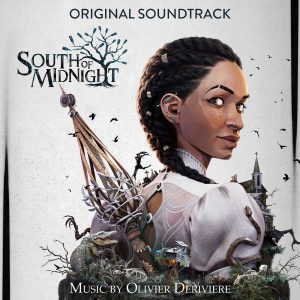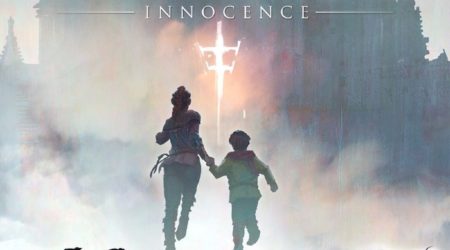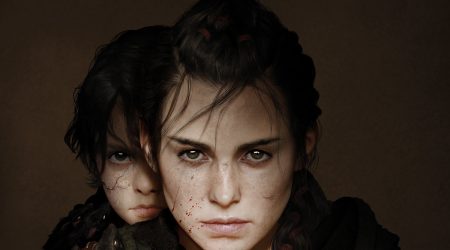
Writing music for a video game is very different from writing music for a television show or a movie. When a movie or TV show is released, the events happening are always the same, and the music can be written exactly to those events. Composing for video games is an entirely different story, because the player is in charge of how and when certain events are happening, and the music has to reflect that perfectly. It is a challenge to make it sound like the composer knows precisely what the player wants to do. One of the composers who understands this perfectly is Olivier Derivière, who has been working in the gaming industry for a long time and has been very hands-on in implementing his music into the game As a bonus, he is also able to write excellent music for what the game needs.
Derivière’s most recent achievement was writing the music for the game South of Midnight. It is a game that is taking place in the Deep South of the United States, where a young woman, Hazel, tries to find her mother. On her journey, she gains magical powers to fight monsters from local folklore that have come to life. In a world where big-budget video game companies try to keep working on already established and successful formulas, I have never seen a game company explore such an interesting world before. What makes this game also unique is that the developers used clay puppets, which they had digitized for all the characters in the game. To accompany all these unique ideas, Derivière had to write a score that complements these artistic ideas and stories.
For the music Derivière was heavily influenced by the area where the story takes place, and according to this article, Derivière used quite a few local musicians for the score. In “Hazel’s Story,” the first track of the album, you can hear these influences perfectly. The music is a wonderful blend of jazz, country and blues, but it also has orchestral elements that give the music some additional emotional support. It is a beautiful track with an exciting, gorgeous theme, but it also contains some mystery you do not expect, such as where the notes sound a bit off, making it a perfect theme for the protagonist, who is learning her new powers in this strange world. You can hear this theme several times throughout the score, with a more heroic version in “The Realization.”
The album has more highlights, like “The Storm,” but I would like to point out the songs. On Hazel’s journey, she encounters a couple of bosses, which are loosely based on local folklore, and each has their own song with lyrics telling their story. These songs, using the styles and instruments from the Deep South area, are “The Tale of Benjy, ” “The Tale of Two‐Toed Tom,” “The Tale of Rougarou” and “The Tale of Huggin’ Molly,” which are all sung by a children’s choir. What I love about them is that these songs are taken to the next level for the respective boss fights, in which a vocalist is featured who sings new lyrics in a different melody, where the original song is still used as the foundation.
When I hear songs on a soundtrack album, it makes me curious why they are there and how they are used in a game. While watching footage from the game, I found out, to my excitement, that you can hear these songs while the player is traversing through the world, and not during cutscenes. It is not common to hear songs during gameplay, and definitely not during boss fights, but it perfectly fits the world of South of Midnight. The game has several chapters that involve one of the bosses. At the start of the chapter, the music is more in the background, but at certain moments in the game, the song is smoothly transitioned into the music, with the boss fight song at the end as the climax during that fight. Using the songs in the background, instead of having pure instrumental music set the mood, makes this unique music style perfect for this game and supplements the already excellent story and art exceptionally well. I can see a world where a traditional film composer would struggle with such an assignment, but as I have grown accustomed to it, Olivier Derivière delivered another outstanding and unique score for a video game.
Listen or buy
- Buy this soundtrack from Bandcamp (recommended and has additional tracks), Amazon or Apple Music
- Listen to this soundtrack on Spotify
Tracklist
The highlights are in bold.
- Hazel’s Story (4:18)
- The Storm (3:32)
- The Floods (2:26)
- The Spirits and Mahelia (1:38)
- The Tale of Benjy (4:21)
- Mysterious Swamps (1:40)
- Echoes of Lacey (0:45)
- The Tale of Two‐Toed Tom (4:40)
- Two‐Toed Tom – Boss Fight (3:44)
- The Run From Kooshma (5:53)
- The Tale of Rougarou (4:14)
- Thoughts of Lacey (1:10)
- Rougarou – Boss Fight (4:07)
- The Witch’s Nose (3:16)
- Reflections of Lacey (1:04)
- The Tale of Huggin’ Molly (3:41)
- Huggin’ Molly – Boss Fight (5:15)
- The Realization (1:45)
- The Full Story (5:21)
- The Story Ends (0:59)
Total length: 1 hour and 3 minutes
Ameo Publishing (2025)



